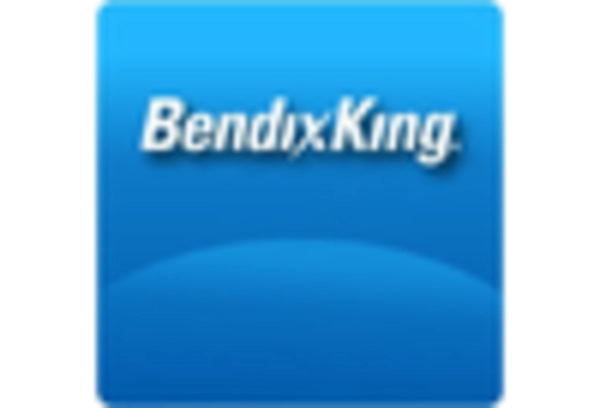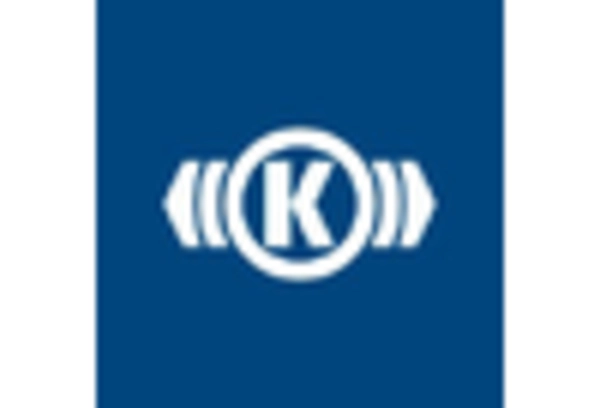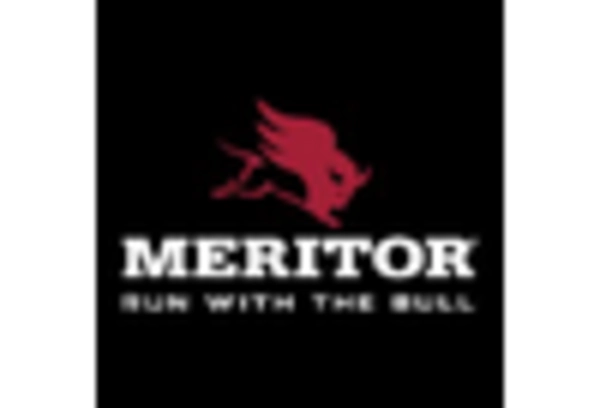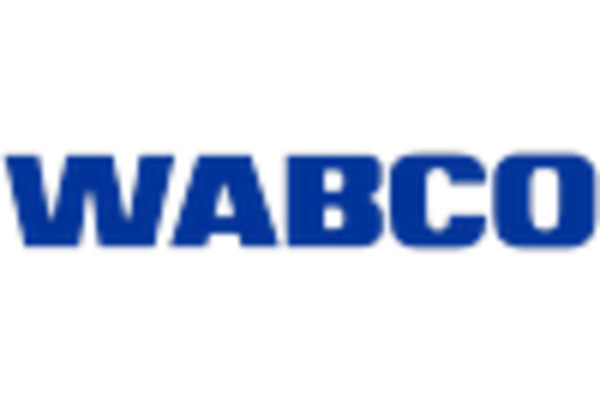Focus on Safety Standards
Safety remains a paramount concern in the Brake Chamber Market, as regulatory bodies worldwide enforce stringent safety standards for vehicles. The implementation of advanced braking systems, including air brake chambers, is becoming increasingly mandatory to enhance vehicle safety. Recent regulations have emphasized the need for reliable braking performance, particularly in commercial vehicles. This regulatory landscape is expected to drive the demand for high-quality brake chambers, as manufacturers strive to comply with these standards. The Brake Chamber Market is thus likely to see a shift towards more robust and efficient products, ensuring that vehicles meet the necessary safety benchmarks while also improving overall performance.
Growth of the Aftermarket Segment
The aftermarket segment within the Brake Chamber Market is witnessing substantial growth, driven by the increasing number of vehicles on the road and the need for replacement parts. As vehicles age, the demand for maintenance and replacement of brake components, including brake chambers, rises. Market analysis indicates that the aftermarket for brake chambers is expected to grow at a rate of approximately 5% annually, reflecting the ongoing need for reliable and efficient braking systems. This trend presents opportunities for manufacturers and suppliers to expand their product offerings and enhance customer service, thereby solidifying their position in the Brake Chamber Market.
Increasing Demand for Commercial Vehicles
The Brake Chamber Market is experiencing a notable surge in demand, primarily driven by the increasing production of commercial vehicles. As economies expand, the need for transportation and logistics services grows, leading to higher sales of trucks and buses. According to recent data, the commercial vehicle segment is projected to witness a compound annual growth rate of approximately 4.5% over the next five years. This growth directly correlates with the rising demand for brake chambers, which are essential for ensuring the safety and efficiency of heavy-duty vehicles. Consequently, manufacturers in the Brake Chamber Market are likely to invest in innovative designs and materials to meet the evolving requirements of this expanding sector.
Sustainability and Environmental Concerns
Sustainability is becoming a critical driver in the Brake Chamber Market, as manufacturers face increasing pressure to adopt eco-friendly practices. The push for greener technologies is influencing the design and production of brake chambers, with a focus on using recyclable materials and reducing emissions during manufacturing. Additionally, the rise of electric and hybrid vehicles is prompting a reevaluation of traditional braking systems, leading to innovations that align with environmental goals. Market trends suggest that companies prioritizing sustainability in their operations are likely to gain a competitive edge in the Brake Chamber Market, appealing to environmentally conscious consumers and regulatory bodies alike.
Technological Innovations in Brake Systems
Technological advancements are reshaping the Brake Chamber Market, with innovations in braking systems leading to enhanced performance and reliability. The integration of smart technologies, such as electronic brake control systems, is becoming more prevalent, allowing for improved responsiveness and safety. These innovations not only enhance the functionality of brake chambers but also contribute to the overall efficiency of vehicles. Market data suggests that the adoption of advanced braking technologies could increase the market share of electronic brake chambers significantly in the coming years. As manufacturers continue to invest in research and development, the Brake Chamber Market is poised for transformative changes that could redefine braking solutions.

















Leave a Comment